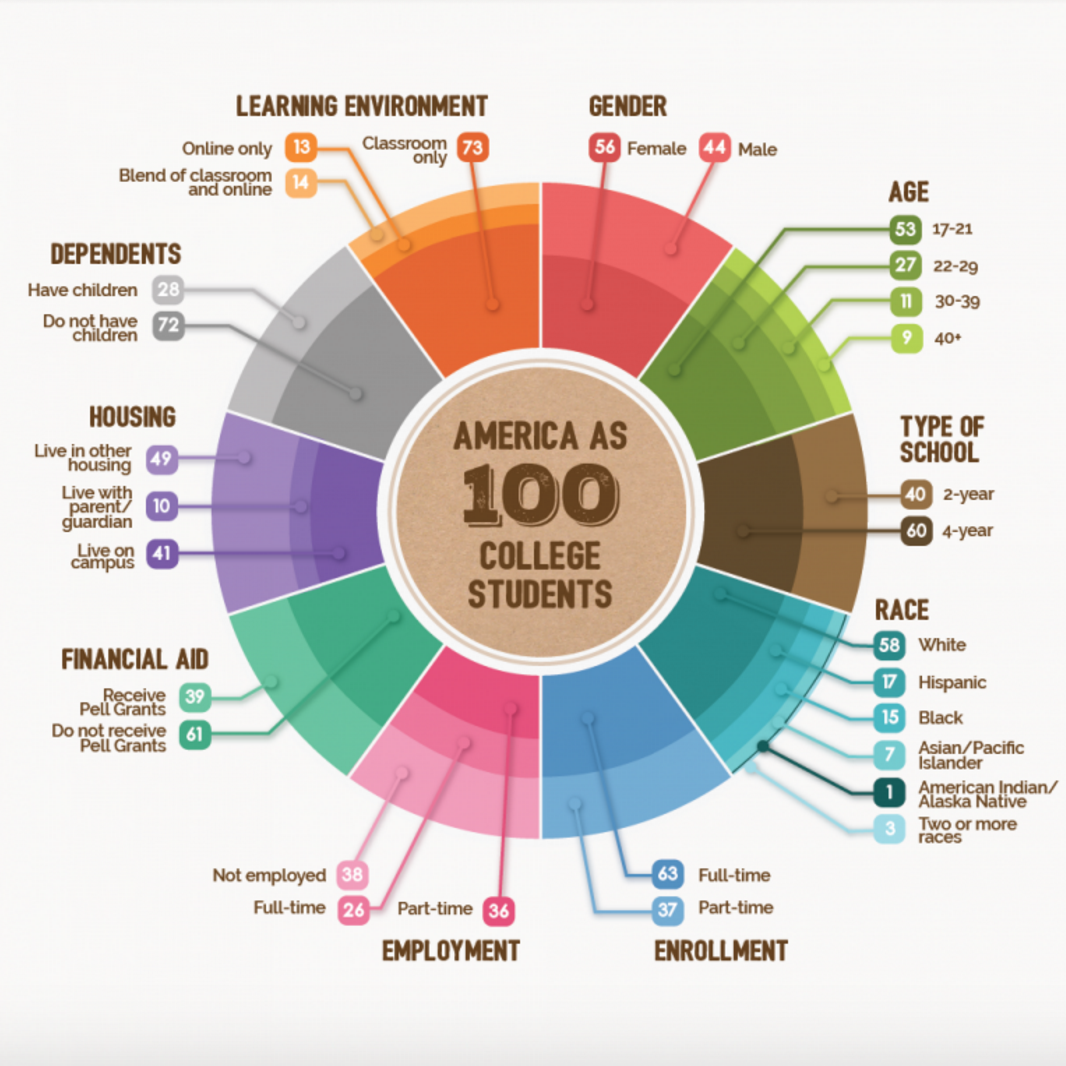Higher Education Trends - 2016
As a web agency that works with multiple higher education institutions, ImageX keeps its figurative finger on the pulse of the sector. Some weeks are busier than others for new data and studies being released, and this week definitely falls into the busy category. Let’s take a look at the week that was in higher education! The Bill and Melinda Gates Foundation released a compelling student demographic breakdown of what the higher education landscape looks like in America:

College Students Aren't Your Typical Highschool Graduates
The key takeaway from our team was the level of diversity within the student profile; the idea of a University or College being nothing but teenagers fresh out of high school paints an unrealistic portrait of today’s higher education landscape. Perhaps most surprising is the number of students with children of their own making up 28% of all post-secondary students, while the shifting learning environment continues to see the traditional “classroom only” style of learning lose ground to both online-only and blended learning models that incorporate both online and classrooms.
While we can’t prove that rising tuition costs are the cause, it would certainly be a strong hypothesis to suggest that 62% of students are either working full time or part-time because they have to offset historically high tuition, which likely explains the rising part-time and 2-year enrollment increases. If nothing else, this research shows very clearly that schools must adapt and be flexible to non-traditional learning models.
Students are embracing "Learner-Centered Teaching"
The Wall Street Journal published an interesting article this week, “How to Fix Higher Education.” It echoes several of the points made above that focused on the changing landscape of student profiles and their preferred methods of learning. Chief amongst the recommendations is moving away from “lecture-style” classrooms and toward “learner-centered teaching.” The article shares intriguing teaching examples from the University of North Carolina where students watch lectures outside of classroom hours and spend their in-class time working collaboratively to solve problems and engage in debate. The author, Carol Folt, Chancellor at UNC at Chapel Hill argues classrooms need to mimic the real world where varied perspectives and collaboration are used daily to solve complex problems.
Faculty Credentials are not as important as student outcomes
And lastly, Forbes echoed the sentiments of the above but took aim at the way teachers are hired to solve the changing needs of students with their article, “How Better Job Descriptions Will Change Higher Education.” The premise of the argument is quite simple; traditionally, higher education professors are hired based on their credentials, not on their ability to impact student outcomes.
An interesting point is made in that student outcomes, not the prestige of the faculty, will in the long term drive revenue growth from increased enrollment and alumni donations through rising program completion rates and the success of students making real-world contributions.
This seems like a logical course of action for institutions that may not carry the “prestige” of an Ivy League school, but how will those types of schools, who attract students based largely on their brand and prestige of the faculty adjust? Can they, given their business model? It’s an interesting debate to have. Anyone working in the higher education sector won't be surprised by these trends; the data has been pointing toward a changing student profile for years, as well as the need for a more modern approach to how to students learn in 2016. The question we find ourselves asking is, how quickly will higher education be able to respond?



